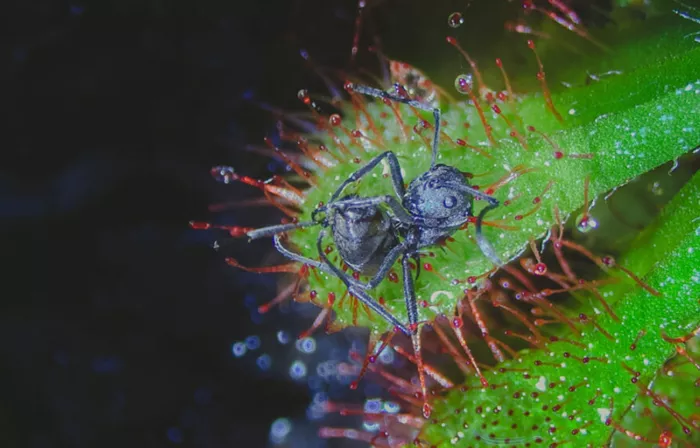Insects have long had to contend with carnivorous plants, but now, a new threat has emerged in the form of an acid-loving fungus.
This fungus, called Acrodontium crateriforme, works in tandem with a type of meat-eating plant known as the sundew. Sundews are known for their tentacle-like leaves coated in a sticky substance called mucilage, which traps insects. Once caught, the insects suffocate or die from exhaustion, and the plant uses enzymes to break down their bodies and absorb the nutrients.
However, enzymes produced by the plant aren’t the only digestive aid. Acrodontium crateriforme also produces digestive enzymes that help break down the insects more efficiently. The fungus makes the environment around the sundew’s leaves more acidic, which accelerates the breakdown process, helping both the plant and the fungus work faster.
“This creates a synergistic effect,” explained Isheng Jason Tsai, an evolutionary biologist at Academia Sinica in Taipei, Taiwan. The combined action of both the plant’s and fungus’s enzymes results in faster digestion, allowing the plant to absorb more nutrients. Tsai and his team published their findings in the October issue of Nature Microbiology.
Previous research has shown that other carnivorous plants, such as pitcher plants and bladderworts, also host microbes that assist with digestion. However, this discovery reshapes our understanding of how these plants digest their food, Tsai said.
Tsai’s team focused on Drosera spatulata, or spoon-leaved sundews, which are found in temperate and tropical regions, including Taiwan. The researchers discovered a variety of bacteria and fungi living on the plants, with Acrodontium crateriforme being the most common. Its DNA made up about 40 percent of the microbial genetic material found in the plant’s leaf mucilage.
To test the fungus’s impact, the scientists placed powdered ants on sundew plants to simulate prey capture. Sundews with A. crateriforme took an average of 73 hours to digest the powdered ants, while plants without the fungus took 92 hours.
The fungus is not exclusive to Drosera spatulata—it has been found on sundews across three continents, including species in the United Kingdom and United States. A. crateriforme has also been found on purple pitcher plants, suggesting a broader, ancient relationship between the fungus and various carnivorous plants.
Tsai believes the widespread presence of the fungus indicates a long-standing evolutionary strategy between the two organisms, hinting at a deeper and more complex relationship in the world of botanical carnivory.
Related topics:


